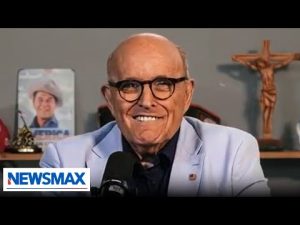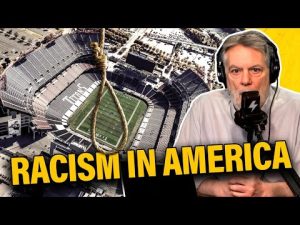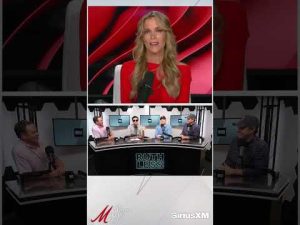**The Tug-of-War Between Trump and Powell: A Roller Coaster for the Markets**
In a dazzling display of political drama, former President Donald Trump has once again created a whirlwind with his recent comments regarding Federal Reserve Chair Jerome Powell. What started as mere speculation has sent shockwaves through the financial markets, leaving investors scratching their heads and wondering just what on Earth is going on. If one thing is clear, it’s that stirring the pot of economic policy can have immediate and far-reaching impacts that no one can ignore.
Last night, rumors began swirling on social media and financial news outlets suggesting that Trump was mulling over the idea of giving Powell the boot. The only rationale given seemed almost comical — apparently, it stemmed from Powell’s approval of some renovations. Folks, firing someone over office decor sounds more like a sitcom plot than a serious policy move. It’s important to remember that the Federal Reserve operates independently from the political fray, making such threats from the White House an overreach of executive power.
As if the chatter wasn’t enough to send the markets into a frenzy, the stakes only heightened this morning. Bloomberg terminals buzzed with news that Trump could take action as soon as tonight. This marked the start of a dramatic downward spiral for stocks, with the S&P 500 and NASDAQ experiencing sharp declines. Just about every asset class felt the heat. Even Bitcoin, a digital currency often seen as a hedge against central bank tinkering, took a hit. Meanwhile, bond yields jumped as investors fled to safety, resulting in the dollar tumbling against other currencies. Gold, on the other hand, seemed to gleam brighter than ever, as investors recognized its status as a haven when the dollar is weak.
Just when things appeared bleak, Trump pulled a classic political maneuver, rowing back his fire-Powell sentiment with claims of “fake news.” Was this a calculated move to test the waters of market sentiment? Many have begun to speculate whether Trump simply wanted to gauge how the markets would react, similar to tactics he employed during his administration. Regardless, this flip-flopping showcases the tension inherent in the dynamic between politics and monetary policy, underscoring the importance of an independent Federal Reserve.
Why exactly does an independent Fed chair matter so much? At its core, an independent Federal Reserve is designed to make sound monetary decisions free of political pressure. This is crucial in a world where politicians are incentivized to pursue short-term gains to keep voters happy, often at the cost of long-term economic stability. Without an independent leader, monetary policy could devolve into a game of popularity, prioritizing electoral victories over economic integrity.
Fortunately, there’s a silver lining amid this chaos. The markets seemed to signal that even the prospect of a less independent Fed chair isn’t met with enthusiasm. In fact, some analysts observed a significant divergence in bond yields that pointed to apprehension over future inflation and economic overheating. The reaction from investors suggests they recognize the potential peril in adopting risky monetary shortcuts and understand that a healthy economy thrives best under prudent policy decisions.
As this saga continues to unfold, one thing remains certain: the relationship between politics and economics is a turbulent one, and the actions taken today could resonate for years to come. With most Americans hoping to avoid the kind of monetary instability seen in countries like Venezuela or Argentina, the call for an independent Fed chair grows increasingly critical. As we wait for what tomorrow brings, the financial world is certainly on the edge of its seat, eager to see how this political roller-coaster ride will play out. Who knows? Perhaps next time, the ride will take us somewhere a bit more uplifting.







